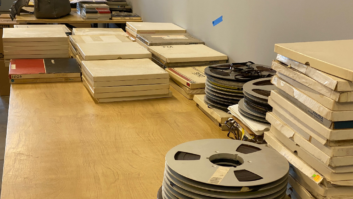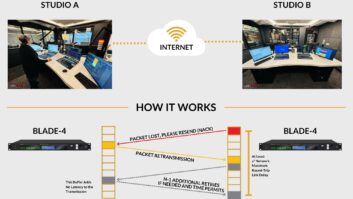The author is an outreach manager for media reform organization Free Press.
It’s no secret that journalism, one of the cornerstones of our democracy, is in crisis.
Decades of bad business decisions and disastrous media policies have pushed the news industry to the brink. Newspapers are closing up shop and broadcast stations are consolidating operations and laying off staff. And while there may be a lot of exciting, innovative and entrepreneurial reporting projects springing up in communities across the country, they won’t do enough to fill the growing void for local and investigative journalism.
This is not hyperbole. Half the states no longer have a single newspaper covering Congress. The number of statehouse reporters has declined rapidly. Specialty beats, such as arts, science and suburban government, have been slashed. Nearly one-third of all journalism jobs were lost in the last decade. The news industry is hemorrhaging.
Here’s the daunting reality: There is no longer enough private capital — in the form of advertising, subscriptions, philanthropy and other sources — to support the depth and breadth of quality local, national and international news reporting that our communities need. To build a media system that sustains democracy in the 21st century, smart changes to public policy are necessary. That means the government will have to be involved.
Break the cycle
But government involvement does not mean government gate-keeping or censorship. A complex web of policies and regulations has always surrounded the media industry. Postal subsidies in the 18th and 19th centuries helped ensure that newspapers and magazines were able to reach Americans across the nation with a diversity of viewpoints. Broadcasters have been given exclusive rights to utilize the public airwaves. And phone and cable companies have enjoyed massive subsidies in the form of tax breaks and the exclusive rights to dig up our streets.
When it comes to better local journalism, there is a solution for today’s problems right under our noses: a newly revitalized public media system in America.

The current public broadcasting system was designed and established by legislation that was written in the late 1960s. In its 40-year history, public broadcasting has earned considerable accolades and soars ahead of the military, the courts and Congress in terms of public trust.
Despite their chronically underfunded state, public broadcasters have been able to accomplish a great deal in the past 40 years. A national network of noncommercial television stations bring quality children’s and cultural programming into homes in nearly every corner of the country for free. Public radio has become a leader in providing news and public affairs programming. But in the 21st century, the role of public broadcasting must evolve.
Our public investment in public media pales in comparison to our need. The federal government allocates a measly $1.43 per person each year to the entire public broadcasting system. Compare that to spending in other nations like Denmark or Finland, where they spend more than 70 times that per capita. If the United States spent as much as these other nations, public media’s annual budget from the federal government would be over $30 billion.
The paltry amount of money devoted to U.S. public broadcasting is one problem; the source of that funding is another. Funding for public broadcasting comes directly from federal appropriations each year. This creates a perpetual cycle in which public broadcasters must participate in an annual song-and-dance with congressional appropriators to stay in their good graces.
A media rebirth
At Free Press, we are not advocating that the government write a blank check for the Corporation for Public Broadcasting, NPR and PBS. Instead, we believe that the CPB should be reborn as the Corporation for Public Media (CPM) and be refocused on providing communities with the kind of local, national and international journalism that is so desperately needed in today’s crashing commercial journalism market.
The leadership of this system should be made up of representatives from the public media world, instead of political appointees made by the White House. And there must be a strong firewall in place to prevent any meddling with content.
New criteria should be developed to ensure that funds from the CPM are distributed to organizations, individuals and entities across the country that are doing high-quality public media work — whether that be local public access stations that provide residents with media training or independent, noncommercial journalism websites that have stepped up to fill a void where the local papers have vanished. This money needs to be used to build a public media system that is more diverse and more responsive to an individual community’s needs.
For any of this to be possible, public media will need a lot more money. Our latest study, “New Public Media: A Plan for Action,” lays out a series of concrete proposals for the creation of a trust fund that would get public media off the dole once and for all. That trust could be seeded in a number of different ways, which are explored in detail in the report.
There a few ways to do it, including charging fees to broadcasters for using the public airwaves; auctioning off spectrum to support better public media; placing a tiny tax on advertising; changing the way advertising is treated in the tax code to support the public good; or instituting a small assessment on consumer electronic devices. All these proposals move the system from its approximate $420 million year to annual budgets in the billions.
The exact details still need to be worked out. Determining exactly which mechanism can fund a public media trust is the next step. The first is recognizing that the crisis in journalism is real and that our public media system will be critical in solving it.
Candace Clement of Free Press is co-author of “New Public Media: A Plan for Action” which can be read in PDF form attinyurl.com/rwpublic.












